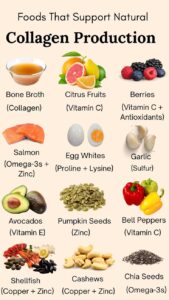Health and Biohacking:
Introduction
Health and biohacking are transforming the way we approach individual well-being and optimal performance.Through the integration of the most recent wisdom, technology, and tone– trial, health and biohacking give practicable results to maximize your body and mind.However, perfecting your focus, or enhancing your overall health, If you are interested in optimizing your energy.
What’s Biohacking?
Biohacking is the act of making life and natural changes to enhance your overall health and performance.
For additional iinformation pertaining to Biohacking click (BIOHACKING)
It ranges from basic dietary and sleep modification to more sophisticated techniques such as the use of technology and gene editing. biohacking consists of:
biohacking consists of:
- tone– trial exercising your own body as a guinea gormandizer.
- Data- driven choices Tracing and covering natural labels.
- nonstop enhancement Occasional, incremental tweaks.
- Scientific methods: Utilizing successful research to one’s own health.
Important Areas of (Health and Biohacking)
1. nutritive Biohacking
- Intermittent fasting Eating within certain time places to enhance the metabolism.
- Ketogenic diets High– fat, low– carb diet for internal clarity and weight operation.
- Nutrigenomics acclimatizing your diet to your inheritable makeup.
- Micronutrient optimization Taking accurate situations of vitamins and minerals by individual demand.
2.Sleep and Circadian Rhythm Optimization(Health and Biohacking)
- Sleep tracking: Monitoring the various stages of sleep and quality
- Light therapy: Employing certain forms of light to reset your body’s internal clock
- Temperature control: Controlling the temperature of the room and body for improved sleepin
- Sleep hygiene: Implementing habits for improved sleeping
3.Physical Performance Improvement(Health and Biohacking)
- Heart Rate Variability (HRV) training: Boosting balance in the nervous system
- Cold thermogenesis: Subjecting yourself to controlled cold for metabolic gain
- High– Intensity Interval Training( HIIT) Maximizing your exercise in shorter time
- Movement optimization Enhancing posture, mobility, and everyday movement effectiveness
4. Cognitive improvement( Health and Biohacking)
- Nootropics Natural or synthetic medicines that help in enhancing brain performance
- Contemplation and awareness Mind training for attention and emotional regulation
- Neurofeedback Real- time monitoring and adjusting of brain exertion
- Cognitive training apps Employing digital technology to enhance memory and processing speed
5. Environmental Optimization( Health and Biohacking)
- Air quality monitoring Maintaining healthy inner air conditions
- EMF reduction Reducing exposure to electromagnetic fields
- Water sanctification Drinking clean, mineral-rich water for bettered hydration
- Biophilic design Bringing in rudiments of nature into your home
Advantages of Biological Optimization
Physical Benefits
- Increased energy situations Enduring energy all day

- Enhanced vulnerable function Enhanced resistance to complaint and recovery
- Advanced body composition Effective fat reduction and muscle gain
- bettered cardiovascular function Enhanced heart performance and blood rotation
- Life Possible extension of healthspan and lifetime
Mental Benefits
- Enhanced attention and concentrate bettered cognitive function
- Advanced mood stability Lessened anxiety and depression symptoms
- Advanced memory bettered literacy and recall functions
- Increased adaptability bettered stress operation and rigidity
- Advanced creativity bettered problem– working and innovative thinking
life Benefits
- Greater self-awareness: Better understanding of personal biology
- Increased productivity: More efficient work and daily activities
- Better sleep quality: More restorative rest and recovery
- Enhanced quality of life: Overall improvement in daily experiences
Important Tips(Health and Biohacking)
1.Start with Essentials
Sleep Optimization
- Maintain regular bedtime and wake- up schedule
- Establish a sleep–conducive terrain of low light and cool temperature( roughly 65- 68 °F)
- Refrain from using mobile or TV at least one to two hours prior to sleeping
- Use special glass like blue light blocking glasses in the evening if needed
Hydration Strategy:
- Drink water first thing in the morning
- Aim for half your body weight to concume water daily
- Add a small amount of high-quality salt to maintain electrolyte balance
- Check the color of urine as a way to monitor hydration levels of your body
2.Nutritional Foundations
Intermittent Fasting:
- Stat eating after 12-hour, like 8 AM to 8 PM
- Increase fasting duration gradually as you’re comfortable
- Hydrate during fasting hours
- Break your fast with nutrient- thick, healthy foods
Quality of Food:
- Select undressed, whole foods
- elect organic foods when available, particularly for the” Dirty Dozen” list
- Consume foods like adipose fish, lush flora, and berries
- circumscribe or exclude reused sugar and trans fats
3.Movement and Exercise
Daily Activity:
- Get 10-15 minutes of morning movement
- Take short walking breaks each hour when you’re sitting for extended periods
- Do bodyweight exercises to keep yourself strong
- Emphasize functional movement over isolated exercises
Recovery:
- Schedule one to two rest days a week
- Attempt active recovery techniques such as gentle yoga or walking
- Ensure good sleep on days when you work out
- Take bath with water (alternating hot and cold) for recovery
4.Stress Relief
Breathing Exercises:
- Use 4-7-8 breathing system for relaxation
- Attempt box breathing( 4-4-4-4) to enhance attention
- Allocate 5 twinkles of diurnal breathing exercises
- Use breathwork apps for guided sessions
Mindfulness:

- Begin with 5 minutes daily meditation
- Maintain a gratefulness journal
- Spend regular time outside
- Restrict your consumption of social media and news
5.Measuring & Monitoring
Basic Metrics:
- Keep track of how long you sleep as well as quality of sleep
- Note your energy levels throughout the day
- Record your mood and stress levels
- Log what you eat and how your digestion responds
Wearable Devices:
- Use fitness trackers for activity monitoring
- Use HRV devices to assess recovery levels
- Track sleep with dedicated sleep apps
- Log your nutrition using food tracking apps
- Advanced Biohacking Techniques
1.Lab Testing(Health and Biohacking)
- Extensive metabolic panels to create baseline health markers
- Hormone optimization similar as thyroid, cortisol, and coitus hormones
- Monitoring nutrient situations like vitamins, minerals, omega- 3s and other nutrents
- Testing for inflammation using labels similar as C- reactive protein and homocysteine
- Genetic testing for customized health information
2.Therapeutic Technologies
- Red light therapy for cellular energy and recovery support
- Hyperbaric oxygen remedy that’s employed to enhance oxygen delivery to towel
- Cryotherapy for recovery and metabolic benefits
- Infrared saunas for detoxification and relaxation
3.Supplement Plans
- introductory supplements similar as vitamin D3, omega- 3s, and magnesium
- Adaptogenic sauces similar as ashwagandha, rhodiola, and cordyceps
- Nootropic composites similar as captain‘s mane, bacopa monnieri, and nascence– gpc
- Performance– enhancing supplements similar as creatine, beta- alanine, and citrulline
- Important Safety and Stylish Practices
1.Start Gradually
- Make one change at a time
- Give 2- 4 weeks for the goods of each change to be noticed
- Document thoroughly your progress
- Patience and time for adjustment
2. Seek Professional Guidance
- unite with medical professionals familiar with biohacking
- Talk to your croaker about significant life or health variations
- Functional drug interpreters should also be consulted
- Have check– ups and laboratory tests done periodically
3.Look at Quality
- Research the brands of supplements completely
- Select products that are third- party tested
- Be careful with unregulated substances
- Know potential side effects and interactions
4.Treat your Body
- Notice how you feel after implementing changes
- Adjust your strategies based on your responses
- Don’t ignore negative symptoms
- Stay flexible with your approach
- Designing Your Personal Biohacking Plan
Stage 1 Foundation( Weeks 1- 4)
Focus on optimizing sleep, hydration, and rudimentary nutrition
Stage 2 enhancement( Weeks 5- 12)
Introduce movement habits, stress– reducing rituals, and rudimentary shadowing ways
Stage 3: (Months 4-6)
Implement more advanced methods, testing, and personalization efforts
Stage 4 Sustaining( Ongoing)
upgrade your strategies, seasonally acclimate, and continue to hone your approach
Miscalculations to Avoid in Health and Biohacking
Attempting too many changes at one time: leads to confusion and diminished effectiveness.
- Ignoring foundational health concepts: Skipping basics for advanced methods
- Not tracking results Making changes without measuring issues
- Blindly following trends Not bodying strategies to unique requirements
- Ignoring professional advice: Failing to use complex interventions unless one is an expert
Tips For Better Health:
- Improved Physical Health: Through optimized nutrition, regular exercise, and sleep enhancement, biohacking supports energy, immunity, and disease prevention[2][5].
- Enhanced Cognitive Function: Techniques such as neurohacking (brain-specific biohacking) can boost focus, mood, and mental clarity through brain games, nootropics (supplements), and meditation[5].
- Data- Driven Decision– Making particular shadowing allows for substantiation– grounded opinions, and it’s simpler to achieve and measure heartiness objects( Health and Biohacking).
- Longevity and Quality of Life: By focusing on both prevention and performance, biohacking can lead to increased lifespan and enhanced day-to-day functioning[1][3].
Useful Tips for Newcomers
- Track Your Habits: Mobile health apps or journals help you log diet, exercise, and mental health markers, revealing patterns and progress[4].
- Focus on Fundamentals: Prioritize healthy habits: eat a balanced diet, move regularly, get sufficient sleep, and manage stress levels[2][5].
- Experiment Carefully: Make incremental changes—one variable at a time—so you can assess what works for your body without confusion[4][5].
- Explore Nutrigenomics: Consider how foods influence your genetic expression; personalized plans based on genetic testing can offer fine-tuned dietary recommendations[3].
- Stay Skeptical: Avoid sensational biohacks that have minimal scientific evidence.
- Advanced Exploration: For those more scientifically inclined, cutting-edge options include stem cell therapies or bioelectrical stimulation, but these carry increased risks and require professional guidance[4].
Safety and Scientific Credibility While there is promise to biohacking, there are risks as well—particularly with untested or radical interventions.
- Improved Physical Health: Through optimized nutrition, regular exercise, and sleep enhancement, biohacking supports energy, immunity, and disease prevention[2][5].
- Enhanced Cognitive Function: Techniques such as neurohacking (brain-specific biohacking) can boost focus, mood, and mental clarity through brain games, nootropics (supplements), and meditation[5].
- Data-Driven Decision-Making: Personalized tracking enables evidence-based adjustments, making it easier to reach and measure wellness goals[4].
For information related to AI and Machine Learning, Green tech and sustainability, Finance and investments click(FUTUREPLUSE.COM)